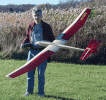Electronics Pioneers & History
- See Full List of AI Topics -

Joseph John Thompson (also known as J.J. Thomson) was a British physicist born
on December 18, 1856, in Cheetham Hill, Manchester, England. He is best known for
his discovery of the electron, for which he was awarded the Nobel Prize in Physics
in 1906.
Thompson studied at Owens College in Manchester and Trinity College, Cambridge,
where he became a fellow in 1884. He held a number of academic positions throughout
his career, including professorships at the University of Cambridge and the Imperial
College of Science and Technology in London.
Thompson's most famous experiment involved the use of a cathode ray tube, which
allowed him to demonstrate the existence of negatively charged particles, which
he called electrons. He also discovered that these particles had a much smaller
mass than previously believed, and he proposed a model of the atom known as the
"plum pudding" model, in which electrons were embedded in a positively charged sphere.
Thompson made many other contributions to the field of physics throughout his
career, including work on the nature of X-rays, the behavior of gases at low pressures,
and the measurement of the charge-to-mass ratio of the electron. He is also credited
for first proposing
waveguide
transmission of electromagnetic waves in a cylindrical metal cavity.
Thompson died on August 30, 1940, in Cambridge, England, at the age of 83. He
is remembered as one of the most important physicists of the late 19th and early
20th centuries, and his work laid the foundation for many later discoveries in the
field of particle physics.
This content was generated by the ChatGPT
artificial intelligence (AI) engine. Some review was performed to help detect and
correct any inaccuracies; however, you are encouraged to verify the information
yourself if it will be used for critical applications. In some cases, multiple solicitations
to ChatGPT were used to assimilate final content. Images and external hyperlinks
have also been added occasionally. Courts have ruled that AI-generated content is
not subject to copyright restrictions, but since I modify them, everything here
is protected by RF Cafe copyright. Your use of this data implies an agreement to
hold totally harmless Kirt Blattenberger, RF Cafe, and any and all of its assigns.
Thank you. Here are the major categories.
Electronics & High Tech
Companies | Electronics &
Tech Publications | Electronics &
Tech Pioneers | Electronics &
Tech Principles |
Tech Standards
Groups & Industry Associations |
Societal Influences on Technology
|


























